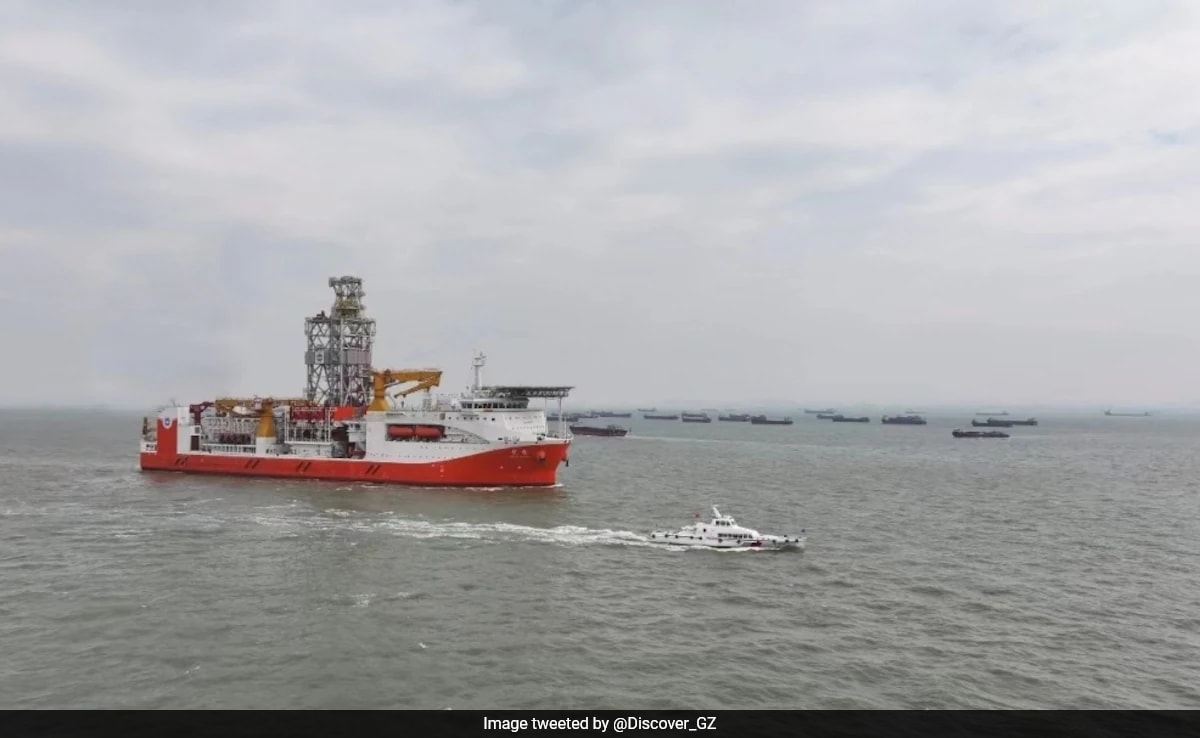The ship ship can carry about 33,000 tonnes of cargo and measures 179 metres long.
China has unveiled its first ocean drilling vessel, the Mengxiang, which is designed to delve into the Earth's crust and explore the mysteries of the mantle. If successful, this will mark humanity's first exploration into the upper mantle. According to the South China Morning Post (SCMP), the massive ship, aptly named "dream" in Chinese, has been created by the China Geological Survey along with over 150 research institutes and companies. It represents a significant stride in deep-sea drilling capabilities, aiming to reach where humanity has never ventured before.
According to SCMP, the colossal ship can carry about 33,000 tonnes of cargo and measures 179 metres (590 feet) long. The vessel can traverse 15,000 nautical miles and operate for 120 days per port call. Its stability and structure are designed to withstand the strongest tropical cyclones, enabling it to operate anywhere in global waters. Moreover, its drilling power is the best in its class, with the ability to reach 11,000 metres below the sea's surface.
Traditionally, human activities and scientific exploration have been limited to the crust's surface layer, which has an average thickness of 15,000 metres. Beneath the crust lies the mantle, a pivotal layer connecting the surface to the core. The boundary between the mantle and crust, known as the Mohorovicic discontinuity, or Moho, remains the final barrier for humans in exploring the mantle.
The Mengxiang aims to penetrate the crust and reach the mantle from the sea surface, opening an unknown door for scientific research.
Also Read | China's New Amended Criminal Law Punishes Those Giving Bribes To Officials
According to the outlet, since the early 1960s, American scientists have tried to pierce through the Moho to reach the mantle, but the goal has yet to be achieved. However, advancements in deep ocean drilling technology have provided valuable insights into the Earth's structure.
"Rock samples from ultra-deep boreholes have become crucial for understanding plate tectonics, oceanic crust evolution, ancient ocean climates and seabed resources," said Li Chun-feng, a marine geologist at the Department of Marine Sciences at Zhejiang University in eastern China.
Further, SCMP reported that while Mengxiang recently underwent trials primarily testing its propulsion system, the core drilling details remain shrouded in mystery.
"There's a gap between theoretical design depth and practical operations, high temperature and pressure at the seabed pose difficulties for drilling beneath 7,000 metres," said Wan Buyan, a professor at Hunan University of Science and Technology who led the development of China's first deep-sea drill equipment and is an expert in seabed engineering.






Leave a Reply